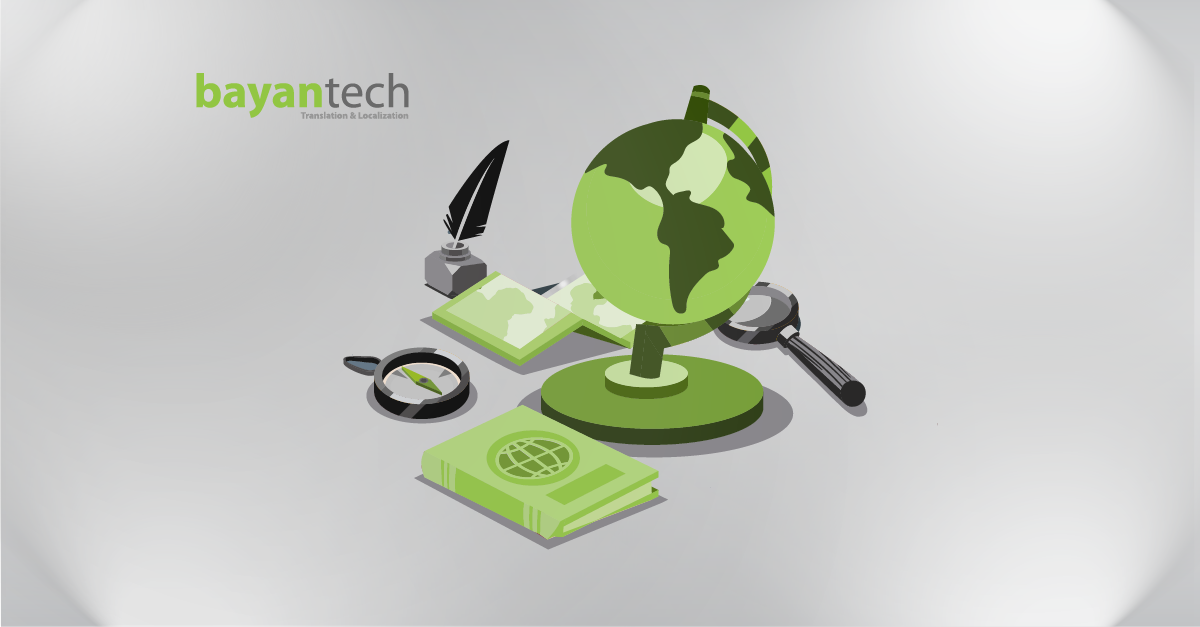Engaging, emotive, and visually captivating marketing videos have the power to leave a lasting impression on your audience.
But what happens when you are ready to take your brand to the world? How do you break through barriers to truly connect with multilingual audiences when languages, cultures, and experiences differ so vastly?
Video localization can make your marketing videos take the world by storm, connecting you with viewers in Tokyo, Paris, São Paulo, and every single corner of the world, ensuring your business message is not only heard but felt deeply by diverse audiences.
In this blog, we will give you the low-down on everything you need to know to launch a successful video localization. We will walk you through what video localization is all about and show you how it has the potential to maximize your marketing impact in international markets.
So, shall we begin?
What Does Video Localization Actually Involve?
Have you wondered what magic transforms videos into a globally accessible experience? Video localization is the process of adapting content across languages, cultures, and viewer expectations to ensure your message resonates globally. It is more about reshaping the experience to reflect local values, humor, customs, and cultural references that truly connect with each audience.
Let us explore the meticulous craft behind skillfully transforming videos into engaging experiences for audiences everywhere, regardless of language or culture.
1. Video translation (script conversion)
At the heart of effective video localization is a precise translation process as a vital first step in the localization workflow.
In this crucial step, skilled translators proficient in both the source and target languages accurately translate the dialogues, captions, on-screen text, and any written materials associated with the video, making sure that:
- Every written element is converted from the source language into coherent, audience-appropriate equivalents in the target language.
- The translated content is adjusted to suit the cultural preferences, norms, and sensitivities of the target audience.
- All changes preserve the video’s core information, themes, and emotional impact as experienced in the original.
2. Subtitling
Subtitling is an audio-visual translation of the video’s dialogue and relevant information that helps to eventually display translated text on the screen in the target audience’s language.
During the subtitling process, skilled subtitlers ensure that the text is accurately translated, properly timed, and well formatted, taking into account any limitations on screen space, presentation rhythm, and reading speed for easy readability and smooth subtitles integration.
Next, subtitles are synchronized with the audio, allowing viewers to watch videos while reading along, preserving nuanced meaning and simplifying complex discussions.
The process involves specialized translation that carefully ensures that:
- Translators are proficient in handling cultural nuances.
- Technicians precisely sync captions to correlate with lip movements and audio cues for engrossing translated experiences.
- Localized captions are expertly handled by experienced subtitlers.
- Professional-grade subtitling software and tools are utilized.
- Fonts, colors, and positioning are adapted to suit varied written systems and maintain clarity across screen configurations.
Looking for expert subtitling services? Let our team help you get it right—visit our website to learn more.
3. Dubbing
Another key component of the video localization process is dubbing, the nuanced art of voice acting that brings spoken dialogue seamlessly to life in multiple languages.
The process is carried out by skilled, native-speaking voice talents who are able to handle regional accents, slang, and diverse vocal tones and accurately portray characters’ emotions, localizing not just words but a whole performance. All of this is done while maintaining the emotive, tonal, and technical richness of the original sound
In recent years, AI dubbing has also emerged as a powerful tool, offering faster turnaround times and scalable options for multilingual projects. While not yet a full substitute for human voice acting in emotionally complex content, AI-generated voiceovers can be a cost-effective solution for certain formats, like explainer videos, tutorials, or internal training materials, where speed and consistency are priorities.
The process also involves:
- Careful synchronization of timing to ensure that words align precisely with the movements of the characters’ lips.
- Employing a specialized voice cast to accurately represent character traits like age, gender, etc.
- Utilizing professional-grade audio equipment in sound booths to capture high-quality vocal performances.
- Employing additional voice-over actors for crowds or background characters when a diversity of voices is required.
4. Audio & Visual Elements Adaptation
Beyond text translation, adapting audio and visual elements is also key for effective video localization.
The adaptation process includes modifying elements like background music, sound effects, graphics, and animations to align with the cultural context and preferences of the viewers because even these elements may resonate with one culture and not with the other.
- Background music and atmospheric tracks carry regional associations that may clash or seem odd in other markets. Localizing songs or substituting them with culturally suited compositions ensures emotional consistency.
- Sound effects have room for cultural variation, too. Modifying these subtle audio layers helps to meet your audience’s tastes and preferences.
- Visual symbols from color palettes to representational imagery require nuanced shifts to fit audiences in different target markets.
Today, using an online video editor can streamline much of this process, making it easier to update visuals, swap music tracks, or layer in localized audio without starting from scratch. But for more complex projects, partnering with a professional localization company can offer a greater level of expertise, cultural insight, and quality control, while still giving you access to collaborative tools like online video editors to review and approve edits seamlessly.
Video Translation vs. Video Localization
Why Full Localization Wins
At a surface level, video translation involves converting spoken or written content from one language to another, often word for word. This may include transcribing dialogue and then translating it directly, resulting in subtitles or transcripts in a new language. While it technically communicates the message, this approach often fails to account for the way meaning shifts across cultures. Literal translation can introduce awkward sentence structure, lose emotional tone, and even lead to misinterpretation, especially when idioms, humor, or culturally loaded terms are involved.
Video localization, on the other hand, is a holistic and technically layered process. It doesn’t just translate the script; it reshapes the entire viewing experience for a specific audience.
Breaking Down Video Translation and Localization
| Aspect | Video Translation | Video Localization |
| Definition | Word-for-word language conversion | Full cultural and linguistic adaptation |
| Focus | Language only | Language + culture + emotion |
| Tone | Often lost | Preserved and tailored |
| Script | Direct script translation | Rewritten for clarity and impact |
| Subtitles | Basic and literal | Styled and timed for local viewers |
| Dubbing | Generic voiceover | Emotionally rich, synced dubbing |
| Visuals | Unchanged graphics/text | Adapted visuals and on-screen text |
| Engagement | May feel off or foreign | Feels local and authentic |
| Effort | Quick but limited | More effort, better results |
| Best for | Internal/training videos | Global marketing content |
The Benefits of Localizing Your Video Content
While localizing your video content may seem like an added expense at first, the benefits it brings to your business are both measurable and compelling. According to insights from Wyzowl’s Video Marketing Statistics, video continues to deliver outstanding ROI.
The numbers confirm that you might be missing out on sizable returns by not localizing your marketing videos, highlighting the surprising yet substantial ROI delivered when video content resonates locally through localization.
Localization Challenges—and How to Avoid Them
Video localization can transform your content—but only if you’re prepared for the challenges it brings. Without proper planning, localization becomes time-consuming and resource-heavy, often leading to avoidable delays and inconsistencies.
One common issue is lip-sync mismatch when dubbing. If the translated script isn’t timed to match the speaker’s mouth movements, the result can feel unnatural and distracting. Similarly, retrofitting visual elements, like on-screen text, motion graphics, or culturally specific symbols, after production can be a major headache if not accounted for upfront.
The best way to overcome localization hurdles is to build with localization in mind from the start.
- Write localization-friendly scripts: Use clear, neutral language. Avoid idioms, slang, or culture-specific jokes that may not translate well across regions.
- Leave room for translated text: Translations often expand by 20–30%. Design your layout and timing to accommodate longer subtitles or replace on-screen text without crowding the screen.
- Use platform tools smartly: An online video editor can speed up your workflow by making it easier to manage multilingual assets, replace visuals, and test edits—all from one place.
- Choose the right localization method: Consider whether subtitles, AI dubbing, or a hybrid approach works best for your content, budget, and target audience.
- Bring in native cultural consultants: They’ll ensure your references, tone, visuals, and voiceovers feel authentic.
- Test with local audiences: Before you go live, share your localized video with a small sample of native viewers to catch cultural missteps or awkward phrasing.
bayantech: Your Smart Video Localization Partner
Take the leap; partner with a professional translation agency like bayantech and experience the transformative power of localization. From voiceovers to visuals, we help you achieve true global reach and make sure your marketing campaigns resonate across cultures. Your international audience is ready; let’s help you connect.
8 Steps Every Medical Interpreter Takes
Looking for a medical interpreter? Discover the career path of medical interpreters and qualifications they need to acquire to take on interpreting jobs.









